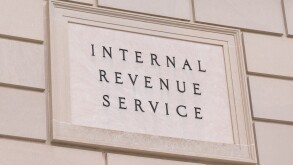The case
The judgment concerned a Swedish company (AB) that was involved in the development and sales of real-time visualisation tools. The Swedish company had been acquired by a US company (Corp). According to the Swedish Tax Agency (STA), rights to retain returns from exploiting intellectual property (IP) developed by AB had been transferred to the US when Corp acquired the shares in AB. In the STA’s view, AB should therefore have received remuneration for the IP transferred. It was uncontested that AB was the legal owner of the IP concerned.
The STA considered that IP rights had been transferred since Corp was responsible for decision-making relating to marketing, sales strategies, agreements with customers, pricing and product development and therefore controlled all material risks related to the IP. As evidence of that, Corp decided on the strategic direction of the IP, the STA referred to answers provided by AB during the tax audit, interviews with company representatives, messages to shareholders, and the group consolidated report and press releases. AB’s role after the acquisition had, from the STA’s perspective, been limited to performing development services on behalf of Corp.
Conversely, AB considered that no transfer of IP rights had occurred, and that Corp had simply been given a license to use and sell the IP developed, which AB had been remunerated for through an arm’s length royalty fee. The basis for AB’s view was that the employees that were responsible for the product development were still employed by AB after the acquisition. In particular, it was considered important that one of the previous owners of AB, that had had a key role in the initial development of the IP, was still employed by AB.
The court stated that a transfer of IP rights was neither apparent from any agreements entered into by Corp and AB, nor from the actions of the companies. The court considered that the evidence that AB had presented regarding the previous owner’s role, and more specifically that the previous owner was so closely connected to the IP that it was unlikely that control over it could be transferred without the owner, was convincing. In contrast, the court considered that only limited importance could be given to press releases, interviews and messages to shareholders, since there could be incitements for representatives of the companies to exaggerate in such documents to generate positive market effects. In conclusion, the court stated that the evidence presented by AB, as well as the agreements in place between AB and Corp, indicated that the rights to the IP developed by AB had not been transferred. Hence, the court ruled in favor of AB.
The challenges of attributing intangible-related profits
The case highlights a new challenge of attributing intangible-related profits, namely identifying the owner(s) of intangibles. In the post-BEPS era, it is clear that legal ownership can be separated from rights to receive economic returns from intangibles. In this sense, the OECD Guidelines explicitly state that entitlement to intangible-related returns does not depend on legal ownership, but on which entity performs or controls important functions, contributes assets and assumes risk related to the development, enhancement, maintenance, protection and exploitation (DEMPE) functions of the intangible. From this perspective, it is in line with the OECD Guidelines that AB was not awarded economic returns on the sole basis that it was the uncontested legal owner of the IP.
However, the STA has taken the OECD’s guidance one step further in invoking a transfer of intangibles if control of IP has changed as a consequence of a third-party acquisition. Thus, it appears that the STA considers that as soon as a company controls strategic decisions relating to IP the company should be regarded as ‘economic owner’ of the IP, even if ‘economic ownership’ is not mentioned in or defined by the OECD Guidelines.
Since it should be rather common that the overall strategy relating to research and development (R&D) and sales is decided by an ultimate parent company, the STA’s view may result in that the acquisition of shares in a company focusing on R&D, in most cases, is considered a transfer of economic ownership. An alternative to invoking a transfer could have been to simply adjust the intra-group royalty to a level that better reflected the alleged DEMPE functions performed.
As the court did not agree with the STA’s view, the case has been appealed and a new judgment by the Administrative Court of Appeal of Stockholm is expected in 2020. At present, it is therefore difficult to know how taxpayers should act following the new developments.
Maria Andersson
T: +46 8 723 96 12
Karolina Viberg
T: +46 8 723 94 52













